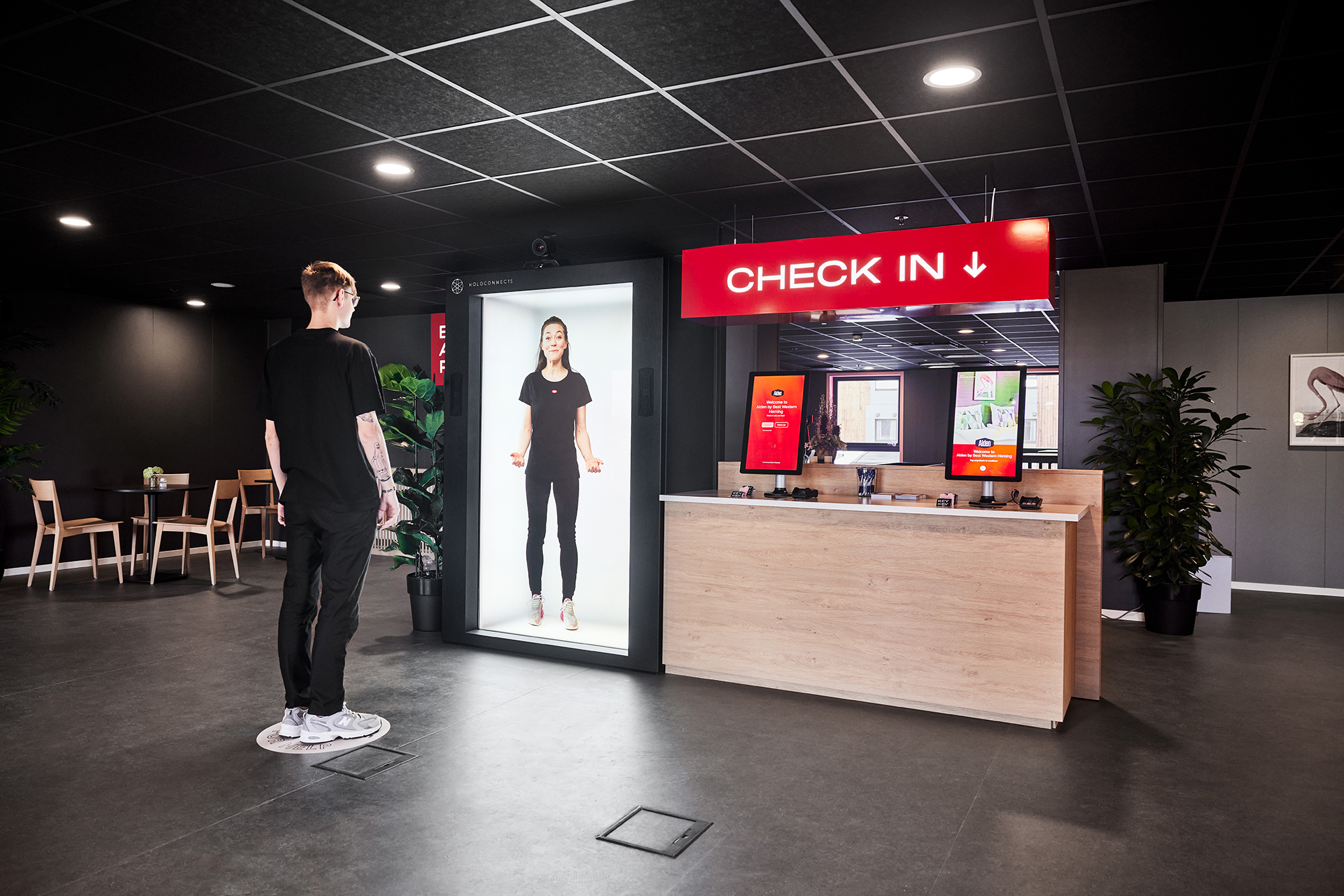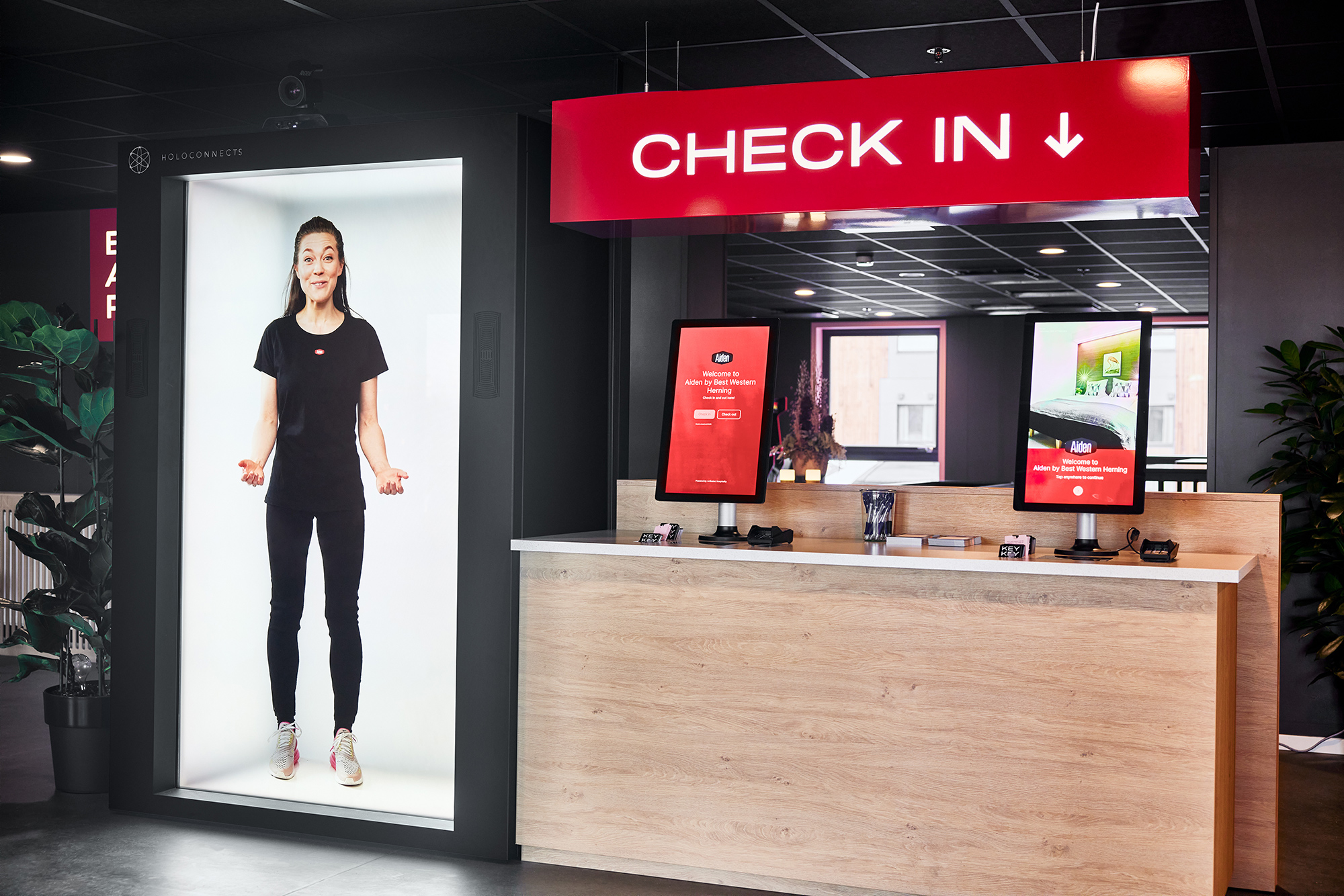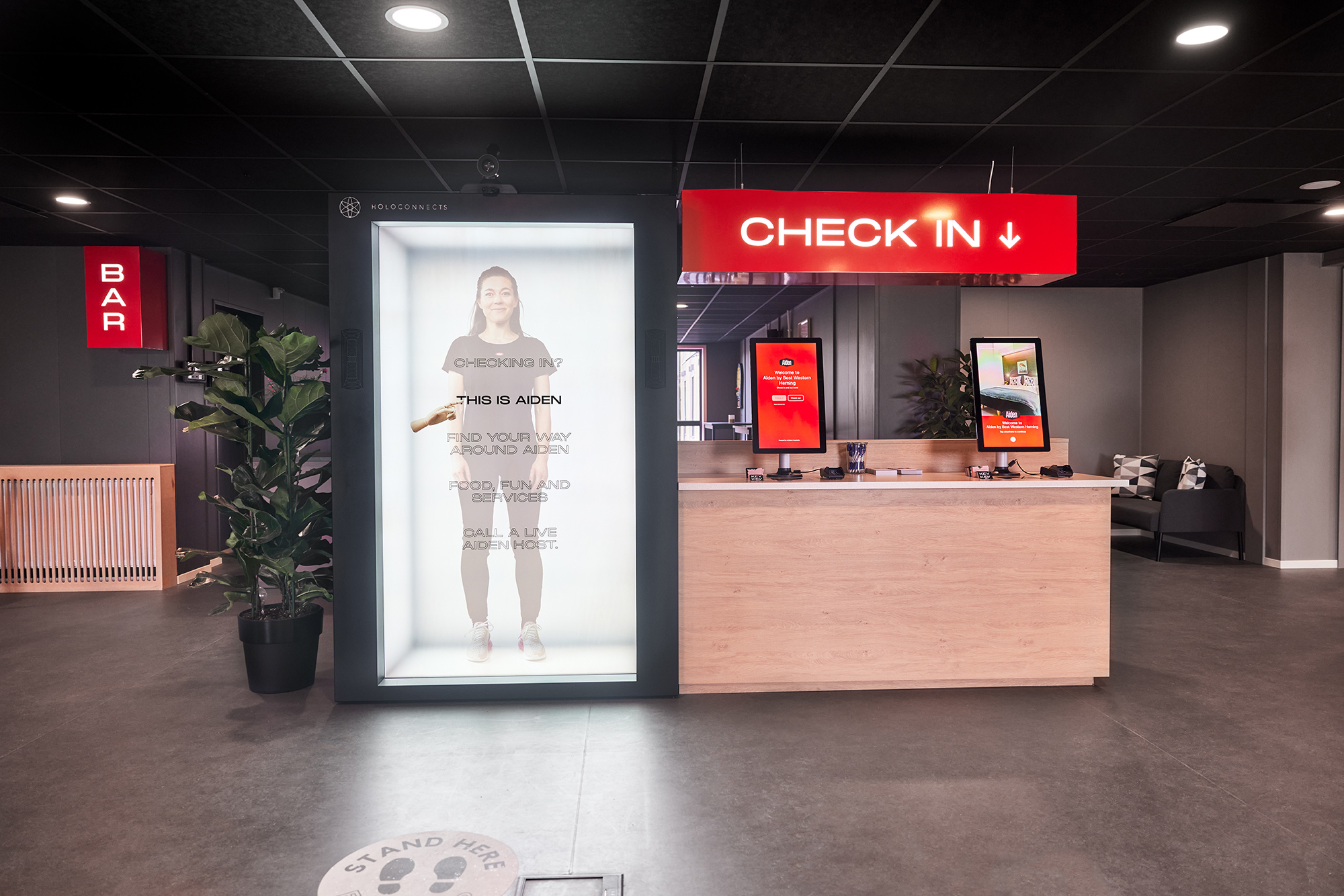Hologram Enabled Hotel Check-In - A Holoconnects Use Case




Synopsis
With the rise of hotel self-service, such as mobile apps and self-service kiosks, guests still prefer authentic human experiences. It is no surprise that hologram technology is finding a home within the hotel industry. Recently deployed in over 30 hotel properties in Scandinavia for check-in, check-out, and guest services, the Holobox by Holoconnects offers a two-way, interactive holographic technology that delivers a real-life, real-size, real-time experience that self-service kiosks cannot emulate. The technology automates tasks and optimizes FTE's time to improve operational efficiency, reduce costs, drive revenue and enhance service. Holoconnects is the evolution of hospitality that’s less like science fiction and more like a vision of the future.
If you thought holograms were an invention reserved for imaginary worlds or science fiction stories – think again. As technology continues to innovate at a blistering pace, many of the digital experiences and conveniences that once seemed like a distant possibility are, in fact, already embedded into our everyday lives. From AI-powered chatbots that can pass MBA exams to the Metaverse, the evolution of Web3, the development of truly immersive VR technology, and now, hologram technology, the influence can be felt across every industry. Hospitality, as you might have guessed, is no exception, and holograms have become the next big thing to take the industry by storm.

The appeal of hologram technology is rather self-explanatory. In a world where teleportation is impossible, holograms provide a worthy compromise. Using three-dimensional projection, which can be seen without special equipment such as cameras or glasses, holograms project a realistic representation of people, scenery, or objects that are either pre-recorded or transmitted live.
Holograms can capture the depth, parallax, and other lifelike properties of the original item in a way other mediums never could. In fact, research from Mordor Intelligence predicts the holographic display market will grow by 27.3% from 2020-2025 and see high growth rates in North America and Asia, specifically.
The Rapid Evolution of Holograms
Hologram technology isn’t technically new; in fact, the first laser-based human hologram was created in 1967, but the way it exists today is a far cry from its original conception.
The music industry, in particular, has taken a shine to the latest hologram tech, with a 2019 Rolling Stone article describing the music industry’s “booming new hologram touring business” as a way to bring beloved artists, such as Whitney Houston, Tupac, and Amy Winehouse, temporarily back to life on stage. Looking beyond the entertainment world, holograms offer businesses extensive practical utility. Some convenience stores have launched a new trial of non-contact self-checkouts that feature hologram registers.
Although they are an advanced digital tool, holograms can tap into our human desire for connection. This desire is arguably more omnipresent than ever following two years of a pandemic. Over this time, we learned that Zoom and Facetime are often unsatisfying replacements for an in-person exchange. With advancements in holograph technology, users can engage with the person on the other end of the line in real time and see their holographic figure (complete with all their gestures, body language, facial expressions, and other unique likenesses) as if they are in the room with them. In a world that often feels starved for human connection that is more tangible than the interactions offered via social media, holograms hold the potential to put the human at the center of the digital experience.
Check-In to the Future With Holoconnects
While we’ve witnessed the rise of hotel self-service, such as mobile apps and self-service kiosks, many guests still prefer authentic human experiences. It is no surprise that hologram technology is finding a home within hotels as a “human-centric” spin on digital touch points across the guest experience.
The Holobox by Holoconnects offers a two-way, interactive holographic technology that delivers a real-life, real-size, real-time experience with a level of personal engagement that self-service kiosks cannot emulate. It allows users to 'beam in' from anywhere in the world. An advanced touch system can be used as an addition to a self-check-in or as extra support during busy moments.
This technology marries innovation and superior guest service to bring a truly unique and modern experience. Despite the complex technology, the Holobox is surprisingly user-friendly: it is a plug-and-play system requiring only electricity and the internet. With the advanced software, the Holobox can be deployed at multiple locations simultaneously, enabling the properties to operate multiple receptions with one recording set, maximizing the use of the available FTEs.
The Holobox has just most recently been deployed at CIC Hospitality's 30 hotels in Scandinavia for check-in, check-out, and guest services. Through the remote sensor, a welcome video is activated. After a welcome video, guests can select from 5 buttons, 4 with pre-recorded information and one connecting to a live employee. Employees at headquarters or one of the other hotels are alerted and can respond to the guest's request, and within seconds they are digitally present to answer any questions. The Holobox provides 24/7 convenience with an agent that speaks the local language and English, and interactions are tracked with an NPS score to ensure optimal guest satisfaction.
Besides check-in/out, the Holobox concierge can inform guests about hotel amenities, experiences, and local events, make reservations, book tickets, and act as a guide to optimize the guest stay. The unique ‘insta-worthy’ technology provides a memorable experience that will be shared again and again on social media.
Holobox is also valuable for hotels hoping to capitalize on group business by promoting unique venue offerings, enabling brands to place a three-dimensional version of the person on a stage or in a boardroom. As the closest thing to teleportation, the technology provides a unique, engaging element that is free of the logistical constraints that may otherwise interfere with booking speakers, talent, and/or company executives joining IRL (in real life).

Much like VR, AR, and AI, holograms represent the future of customer-first industries like retail and hospitality. This technology does not exist to eliminate human interaction or the connection between hotel brands and their guests. Instead, it provides an opportunity to enhance engagement.

Hotels can use hologram technology to automate tasks and optimize FTE's time to improve operational efficiency and personal service. The return on investment (ROI) can be measured immediately with the consolidation and optimization of employees and resources, upsell and marketing opportunities, and increased guest satisfaction and loyalty. Hotel franchisees or single hotel owners using the Holobox as a concierge/reception can see savings of 30% - 40% in staffing costs.
With 2023 officially underway, hologram technology moves us closer to bridging the gap between the digital and real world. It’s the evolution of hospitality that brands like Holoconnects have made less like science fiction and more like a vision of the future.